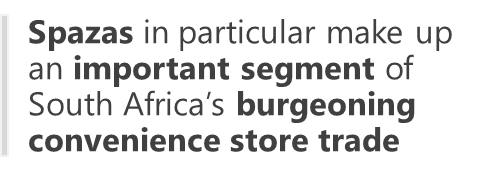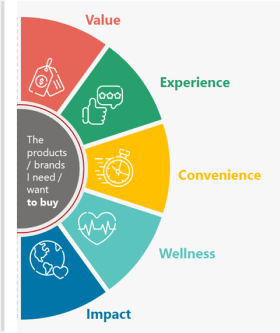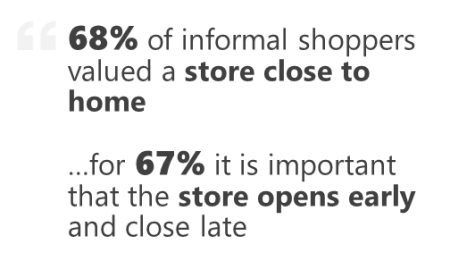The informal retail sector has weathered a storm of challenges and found new opportunities for growth in South Africa’s unique consumer goods market. A new report from Trade Intelligence explores the forces at play in this dynamic sector.
South Africa’s informal retail sector developed under apartheid, when townships were places where few businesses operated, and when business opportunities for black entrepreneurs were scarce. It has become a symbol of the challenges faced by these communities, the invention and the resilience of the people who live there, and the changing dynamics of modern South Africa.
It's also an important market for any business wishing to engage in this growing space. Leading retail research business Trade Intelligence estimates the informal independent sector as worth R184 billion annually across a range of channels – from pavement hawkers to home-based spazas and tuck shops, to small “Midi” wholesaler. 11.1 million of South Africa’s primary household grocery shoppers – representing 26% of all adult South Africans – shop for groceries in this sector. Spazas in particular make up an important segment of South Africa’s burgeoning convenience store trade, competing against forecourt stores and the wave of small-format stores launched by some of the major retailers.
“Over the past few years, we have seen corporate retailers compete for footfall in the informal space, with the likes of Shoprite and Pick n Pay infiltrating the convenience trade through

various ‘spaza’ formats, product and service offerings,” explains Trade Intelligence Head of Research Caroline Short. “Formal retailers such as Choppies, Usave eKasi, Jwayelani and Pick n Pay Market stores located in informal communities with access to alternative power sources are now able to capture shoppers whose local spaza shops are  closed during load shedding.”
closed during load shedding.”
Load shedding has been more challenging for informal retailers than their corporate competitors, as they lack the capacity or the means to provide their refrigeration and other systems with reliable auxiliary power. Another challenge has been security. All South African businesses need to budget for protection against crime, and informal retailers – the majority of whom are immigrants from Somalia and other African or Asian countries, face the additional threat of periodic xenophobic attacks. In a 2022 Trade Intelligence, survey, 40% of spaza shop owners mentioned that crime was the key challenge they faced.
Despite these challenges, the opportunities for informal retailers remain significant. The Government’s social grants program, for example, has been a lifesaver for many South Africans and the businesses they patronize. Almost 19 million South Africans receive the grants; many of these recipients make use of spazas for at least some of their household needs. The rise of mobile and digital payment, purchasing, and point of sale systems has been another boost for the sector, reducing security concerns as cash is taken out of the equation, creating more options for shoppers to pay, and enabling informal retailers to offer value-added services to their shoppers, like the purchase of airtime, data, or lotto tickets, the payment of electricity and water bills, and the ability to conduct basic banking like money transfers.
According to Trade Intelligence, shopper behaviour in the informal retail sector is driven by the five retail megatrends that motivate shoppers in formal retail: the search for value, the importance of wellness, the need for convenience, the enjoyment of a pleasant and engaging shopping experience, and the appreciation of the retailer’s social or environmental impact. “Of the retail megatrends, convenience is perhaps the most important motivator for shoppers,” says Short. “It’s also one area where informal retailers are best able to compete with the formal competition.”


68% of informal shoppers surveyed by Trade Intelligence said that they valued a store that was close to home, followed closely by 67% of shoppers who said it was important that the store opens early and closes late. 78% of older shoppers – many of whom are social grant beneficiaries – said proximity to their home was the most important marker of convenience. Other drivers related to convenience are packaging that is easy to transport, the right range of products, easy payment and checkout processes, and proximity to transport hubs. “Interestingly, many shoppers we surveyed said that the right range of products is more important to them than a ’one-stop shop’ where they can buy everything,” says Short. “This is a critical data point for those suppliers who want to maximise their sales in this dynamic channel.”
When supermarkets and shopping malls first made their appearance in South Africa’s townships in the late 1990’s the speedy demise of the informal sector was predicted by many observers. While the competition has increased, and the conditions become more challenging, informal retailers have shown an unparalleled ability to adapt and innovate, defending their valuable stake in South Africa’s unique economic landscape.
Online r etailers and brands that can collaborate to meet these shopper needs will be the ones that have their growth targets… delivered.
etailers and brands that can collaborate to meet these shopper needs will be the ones that have their growth targets… delivered.
For more about the South African spaza trade, traditional market and/or informal retail, see Trade Intelligence’s 2023 Informal Retail Channel report an essential guide for all FMCG stakeholders looking to grow their brand within the channel. Packed with actionable insights, it will help you identify exciting growth opportunities.
About Trade Intelligence
Trade Intelligence is South Africa’s leading source of consumer goods retail research, insights and capability-building solutions, focusing on the industry’s corporate and independent retailers and wholesalers. We are the trusted voice of the sectors in which we operate, aggregating information to amplify knowledge, grow capability, and enable collaboration that drives profitable trading relationships and sustainable sector growth.

